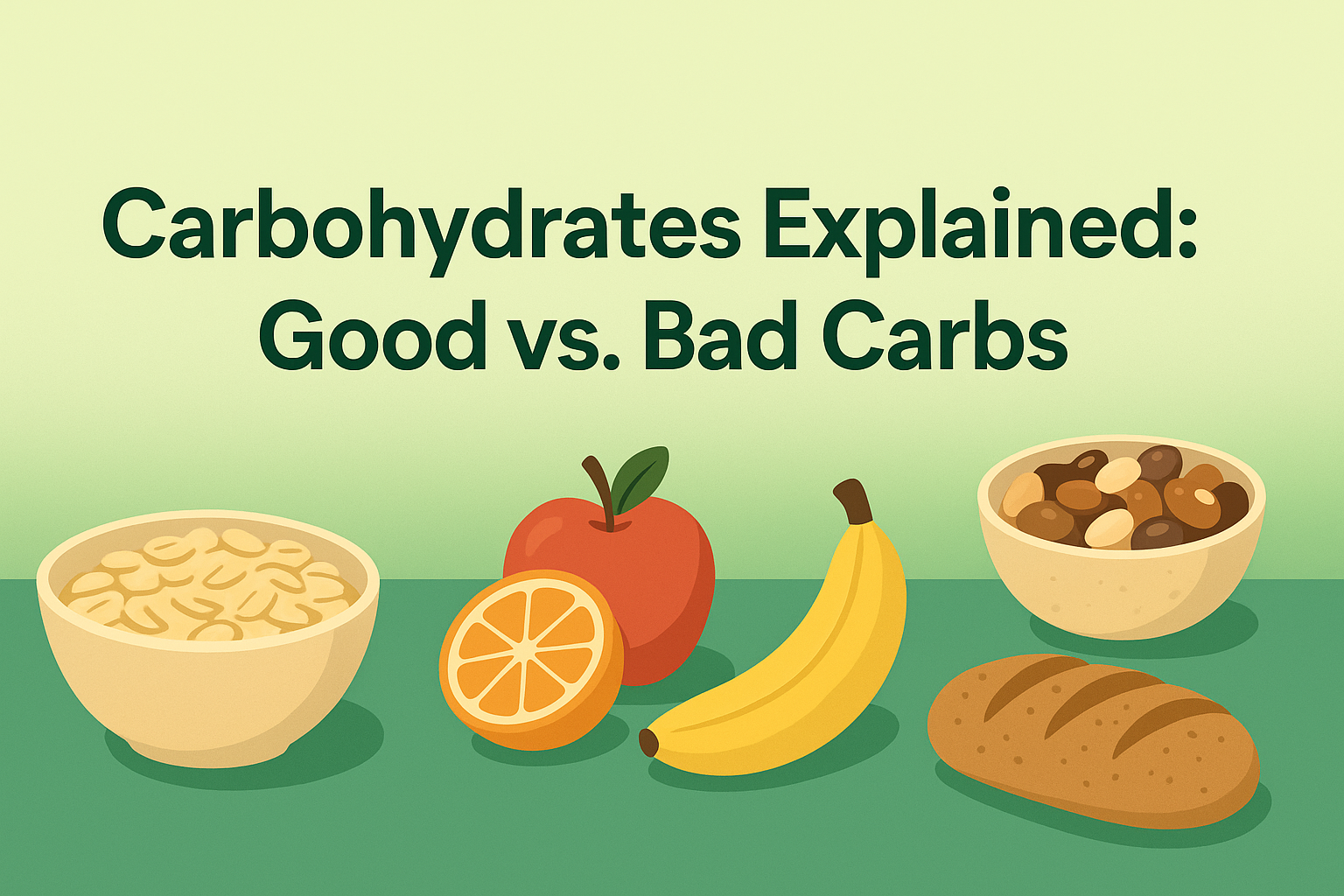Confused about which carbs belong in your diet and which to limit? In this carb guide, we’ll demystify the difference between good carbs vs bad carbs, explain why healthy carbohydrates matter, and show you practical ways to fuel your body without sacrificing flavor or energy.
Quick Overview
- What Are Carbohydrates? (Carb Guide)
- Identifying Good Carbs vs Bad Carbs
- Benefits of Healthy Carbohydrates
- How to Incorporate Good Carbs into Your Diet
- Practical Tips and Meal Ideas
What Are Carbohydrates? (Carb Guide)
Carbohydrates are one of the three primary macronutrients—alongside proteins and fats—that provide energy for your body. At its core, a carbohydrate is any food that breaks down into glucose, the fuel your cells need to function. Carbs come in two main forms:
-
- Simple Carbs: Sugars like glucose, fructose, and sucrose found in candies, soda, and fruit juices. They digest quickly, causing spikes in blood sugar.
- Complex Carbs: Starches and fiber found in whole grains, legumes, vegetables, and some fruits. These digest more slowly and provide a sustained energy release.
Identifying Good Carbs vs Bad Carbs
Understanding good carbs vs bad carbs helps you optimize energy levels and long-term health:
Good Carbs
-
-
- Whole Grains: Oats, quinoa, brown rice, and barley are rich in fiber and nutrients.
- Vegetables: Leafy greens, broccoli, sweet potatoes, and bell peppers offer vitamins, minerals, and fiber.
- Fruits: Berries, apples, and pears contain antioxidants and fiber.
- Legumes: Beans, lentils, and chickpeas provide protein, fiber, and complex carbs.
-
Bad Carbs
-
-
- Refined Grains: White bread, pastries, and many packaged snacks lack fiber and essential nutrients.
- Sugary Drinks: Soda, sweetened coffee, and energy drinks deliver empty calories.
- Processed Sweets: Candy, cookies, and ice cream can lead to rapid blood sugar spikes and crashes.
-
Benefits of Healthy Carbohydrates
Incorporating healthy carbohydrates into your meals offers several advantages:
-
-
- Blood Sugar Control: Fiber-rich carbs slow glucose absorption, reducing spikes and crashes.
- Digestive Health: Dietary fiber supports regularity and feeds beneficial gut bacteria.
- Satiety & Weight Management: Complex carbs promote fullness and can help control calorie intake.
- Nutrient Density: Good carbs supply essential vitamins, minerals, and antioxidants.
-
How to Incorporate Good Carbs into Your Diet
-
-
- Choose Whole Over Refined: Swap white rice for brown rice or quinoa, and choose 100% whole wheat bread.
- Load Up on Veggies: Fill half your plate with non-starchy vegetables at each meal.
- Snack Smart: Reach for fresh fruit, air-popped popcorn, or a small handful of nuts instead of chips or cookies.
- Legume Power: Add beans or lentils to soups, salads, and stews for an extra carb and protein boost.
-
Practical Tips and Meal Ideas
Use these quick ideas to make healthy carbohydrates a seamless part of your day:
-
-
- Breakfast: Oatmeal topped with berries and a drizzle of honey.
- Lunch: Quinoa salad with chickpeas, cucumber, tomatoes, and a lemon-tahini dressing.
- Snack: Apple slices with almond butter or Greek yogurt with fruit.
- Dinner: Roast salmon with a side of sweet potato wedges and steamed broccoli.
-
Conclusion
Mastering good carbs vs bad carbs is crucial for sustained energy, better digestion, and overall well-being. By following this carb guide and prioritizing healthy carbohydrates, you’ll nourish your body, manage hunger more effectively, and lay the foundation for a balanced, nutrient-rich diet.

